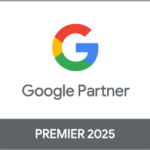Feeling overwhelmed by the constant need to manually adjust bids, change budgets, and tweak ad statuses in Google Ads? We get it. Managing a successful PPC campaign can be exhausting, and missing out on opportunities or making errors due to human oversight is incredibly frustrating.
Juggling several campaigns simultaneously while striving for peak performance is no easy feat. It’s helpful to know that automated rules in Google Ads can take some of this burden off your shoulders by simplifying tasks and reducing mistakes.
After thorough research, we’ve identified effective ways to automate these repetitive processes.
In this blog post, we’ll walk you through how Google Ads Automated Rules can make your life easier. You’ll discover how to set up these rules for different aspects such as campaigns, keywords, and ads.
Plus, we’ll share practical examples to help you boost efficiency. Let’s dive in!
Key Takeaways
- Schedule Status Changes: Use automated rules to pause or resume campaigns based on specific performance metrics like clickthrough rates or conversion costs.
- Adjust Bids Automatically: Set up rules to increase bids for keywords that convert well and decrease bids for underperforming ones, ensuring efficient spend management.
- Modify Budgets Based on Performance: Automate budget adjustments by analyzing conversion rates. Increase budgets for high-performing campaigns and reduce them for low-performers.
- Receive Email Notifications: Enable email alerts for important metrics such as impressions, clicks, and CPA. Stay informed about your campaign’s performance without constant monitoring.
- Optimize Keywords Easily: Use automation to manage keywords effectively. Pause costly keywords that don’t convert well and adjust bids dynamically based on real-time data.
Simplifying Tasks and Reducing Errors
 Automated rules in Google Ads streamline our PPC management. They help to reduce manual errors and save time by performing repetitive tasks efficiently.
Automated rules in Google Ads streamline our PPC management. They help to reduce manual errors and save time by performing repetitive tasks efficiently.
Changing statuses
We can use automated rules in Google Ads to change the statuses of campaigns, ad groups, and keywords. For example, we might want our underperforming ads to pause during low-traffic hours automatically.
This helps us control costs efficiently and ensures resources go where they’re most effective.
Activating or deactivating elements based on specific performance metrics like clickthrough rate (CTR) or cost per conversion is another great strategy. By adjusting the status of different components dynamically, we maintain optimal performance without constant manual oversight.
Moving forward, let’s discuss how these automated rules can help in adjusting bids effectively.
Adjusting bids
Adjusting bids is crucial for optimizing your ad campaigns. We can adjust bids based on the cost per conversion to ensure that we are not overspending on ads that do not convert well.
By setting automated rules, this process becomes efficient and less prone to human error. For instance, if the cost per conversion exceeds a certain amount, our system can automatically lower the bid.
Another useful strategy involves increasing bids to achieve first-page CPC for better visibility. This tactic ensures higher chances of appearing in prime positions in Google search results.
“Visibility is king when it comes to PPC,” says John Smith, an experienced PPC specialist from AdBrand Solutions.
Allowing automation tools within Google Ads helps us stay competitive without manually tweaking every setting constantly. These adjustments help make smarter bidding decisions by leveraging real-time data and predefined criteria aimed at maximizing performance while controlling costs.
Modifying budgets
To modify budgets effectively, we rely on conversion rates. By analyzing these rates, we can automate budget adjustments. This ensures that our spending aligns with performance. We increase the budget for high-converting campaigns and reduce it for underperforming ones.
We use Google Ads rules to set up these changes automatically. For example, if a campaign achieves a target cost per conversion (CPA), an automated rule increases its daily budget by 10%.
Conversely, if the CPA exceeds our threshold, the rule decreases the budget. Setting up email notifications alerts us to any significant changes or trends.
Setting up email notifications helps us stay informed about all updates and necessary actions related to our ads campaigns without manual checks.
Setting up email notifications
We can enhance our Google Ads automation by setting up email notifications. These alerts keep us informed about important metrics like impressions, clicks, and conversions. Email notifications help us stay on top of changes in average position and quality score without constantly monitoring the platform.
To set this up, navigate to “Tools” > “Bulk actions” > “Rules”. Here we create rules that trigger emails when specific conditions are met. For example, we might want an alert if the CPA exceeds a certain threshold or if there’s a sudden drop in clicks.
This proactive approach ensures we’re always aware of crucial performance shifts in our PPC campaigns.
Targeted Elements for Automated Actions

Automated rules can manage various elements such as campaigns, ad groups, and keywords to maximize efficiency in your Google Ads strategy.
Campaigns
For campaigns, automated rules can be lifesavers. We can set rules to change the status of campaigns based on performance criteria. This helps in suspending underperforming ads quickly.
Adjusting budgets automatically for different campaigns simplifies budget management. We may increase spending for high-performing campaigns and reduce it for others. Setting these automated actions ensures that we optimize our budget effectively without constant manual adjustments.
Ad groups
Ad groups play a critical role in organizing your Google Ads. They let us group similar ads and keywords together, making campaign management more efficient. By controlling multiple ads within an ad group, we can ensure our content reaches the right target audience without any extra effort.
We often use automated rules to change statuses for ad groups based on performance metrics. This ensures underperforming ad groups get paused while high-performing ones receive more attention.
Adjusting bids at the ad group level allows us to optimize cost-per-click (CPC) rates effectively, ensuring we stay competitive without overspending.
Keywords
Keywords play a critical role in our Google Ads strategy. They help us target the right audience and optimize our campaigns for better performance. By using automated rules, we can manage keywords efficiently.
For instance, pausing underperforming keywords helps reduce wasted spend and ensures our budget goes toward high-performing terms.
Adjusting bids based on cost per conversion allows us to stay competitive without overspending. This tactic optimizes CPC bidding, leading to improved ad placements on the Google SERP.
Automating these tasks saves time and reduces manual errors, boosting overall campaign accuracy and effectiveness.
Ads
Automated rules in Google Ads allow us to manage ads efficiently. We can schedule the activation and pausing of special ads based on performance. This helps maximize our budget and keeps campaigns agile without requiring constant oversight.
We also have control over status changes for specific ads. For instance, we can automatically pause underperforming ads or activate high-performing ones during peak traffic times. These adjustments ensure that we always present our best offers to potential customers while minimizing wasted ad spend.
Display keywords
Moving from ads, let’s talk about display keywords. We can target specific display keywords with automated rules to streamline our campaigns. By setting rules, we ensure only relevant display ads appear on chosen websites.
This helps increase visibility while keeping costs in check.
Adjusting bids for these keywords is crucial. We set higher bids for high-performing ones and lower them for underperformers. This strategy optimizes our cost per click (CPC) and boosts overall campaign performance without manual intervention.
Topics
We can use automated rules for specific topics to streamline our Google Ads campaigns. By applying these rules, we can efficiently manage status changes for ads targeting particular subjects.
For example, if a topic’s performance doesn’t meet our expectations over a week, the rule pauses those ads automatically.
Adjusting bids based on topic performance also helps optimize cost-per-conversion (CPC). If an ad performs well in a high-value topic like luxury travel or tech gadgets, increasing the bid ensures it stays competitive.
These optimizations save time and minimize human errors while improving overall campaign effectiveness.
Placements
Bid adjustments for ad placements help target our ads where they perform best. Using Google Ads Automated Rules, we can set criteria to increase bids on placements that show higher engagement or conversion rates.
This practice ensures a strategic allocation of our PPC budget.
Automated rules also allow us to pause underperforming placements swiftly. By setting up these rules, we reduce manual errors and save time managing the performance across various placements.
Properly utilizing these tools boosts efficiency and optimizes ad spend effectively.
Audiences
After configuring placements, we can focus on setting the right rules for our audiences. Automated rules help target specific audiences by adjusting bids and modifying ad statuses according to their behavior patterns.
For instance, we might increase bids for users who have interacted with our landing page multiple times in a week.
Targeting audience segments like demographics or interests ensures better performance of our Google Ads campaigns. We can set up automated email notifications to keep us updated on how different groups are interacting with our ads.
Making adjustments based on these insights helps optimize CPCs and CPAs effectively.
Demographic factors
Understanding our audience is crucial, and demographic factors play a significant role. We can use Google Ads Automated Rules to adjust targeting based on age ranges and gender. For example, if data suggests that a specific age group converts better, we set rules to increase bids for that demographic.
Similarly, campaigns might perform differently with males versus females.
We also have options for targeting parental status or income range. If ads resonate more with parents, we create automated rules to ensure these users see our content more frequently.
Adjusting bids based on household income helps optimize spend and improve ROI by focusing budget where it matters most.
Guide to Creating Automated Rules in Google Ads
To create automated rules in Google Ads, start by accessing them through the “Tools” menu. Select “Bulk actions” and then choose “Rules.
Access through “Tools” > “Bulk actions” > “Rules”
To use Google Ads automated rules, start by accessing the interface. Click on “Tools” in the top navigation bar, then continue to “Bulk actions.” Under this section, you’ll find “Rules,” which allows us to create and manage various automated tasks.
We can develop rules for campaigns, ad groups, or keywords directly within this platform. This setup helps simplify many PPC optimizations and reduces manual errors. By setting up these rules, we ensure our strategies run smoothly even without constant supervision.
After creating these rules through the interface steps mentioned above, it’s important to understand how each element affects your campaigns.
Rules creation for campaigns, ad groups, or keywords in the interface
After accessing the “Tools” menu and selecting “Rules” under “Bulk actions,” we can create automated rules for our campaigns, ad groups, or keywords. Start by choosing the element you’d like to manage—whether it’s a campaign, an ad group, or specific keywords.
Use simple conditions such as metrics (like CTR or conversion rate) to set when certain actions should trigger.
Specify the action you want Google Ads to take once these conditions are met. For example, increase bids for high-performing keywords or pause underperforming ad groups swiftly. These steps help in optimizing our PPC efforts without requiring manual adjustments constantly.
Carol’s Recommended Automated Rules
Carol’s recommended automated rules can help you maintain high efficiency in your Google Ads campaigns. They offer practical strategies for email notifications, budget adjustments, keyword management, and bid optimizations.
Email notifications for metrics
We can set email notifications for key metrics like impressions, clicks, and conversions. This proactive approach keeps us informed about our Google Ads performance without constantly logging into the platform.
Tracking average position, quality score, and CPA through these alerts ensures we address issues promptly. By automating email notifications for critical metrics, we reduce manual monitoring effort while staying on top of PPC optimizations.
Budget adjustments based on conversion rates
We need to adjust our budgets based on conversion rates to optimize ad spend. If conversion rates are high, we increase the budget. This ensures that we capitalize on successful campaigns and drive more traffic to our landing pages.
On the other hand, low conversion rates signal a need for budget cuts.
Using Google Ads automated rules helps streamline this process. For example, setting up rules that adjust bids and budgets according to weekday performance can be efficient. By doing so, we reduce manual errors while ensuring optimal allocation of resources across different periods based on real-time data analysis.
Pausing underperforming keywords
Pausing underperforming keywords can save a lot on your PPC campaigns. If the cost per conversion for certain keywords gets too high without delivering value, it’s time to pause them.
We know that every dollar counts in advertising, and automated rules let us manage these low-performing keywords efficiently.
We set up automated rules in Google Ads to pause any keyword that exceeds our threshold for cost per conversion. This keeps our budget focused on more effective areas and increases overall campaign performance.
Let’s adjust bids based on the cost per conversion next!
Keyword bidding adjustments based on cost per conversion
Pausing underperforming keywords ensures that we spend our budget wisely. But adjusting keyword bids based on cost per conversion helps us get the best value for each click. We analyze the performance data and identify which keywords bring conversions at a lower cost.
We can then increase our bids on those high-performing keywords to capture more traffic and potential leads. Conversely, decreasing bids on costly, low-converting keywords prevents wasted spend.
By consistently monitoring these metrics, we optimize our ppc automated rules to maximize returns and reduce unnecessary costs.
Increasing bids for first-page CPC
Increasing bids for first-page CPC can significantly enhance ad visibility. By setting automated rules to boost our bids, we ensure our ads appear on the first page of search results.
This strategy is crucial for achieving competitive edges in high-traffic keywords where visibility matters most.
We recommend configuring rules that adjust bids based on performance metrics and cost-per-click thresholds. Using platforms like Google Ads, we customize bid adjustments dynamically, optimizing spend while reaching top positions.
This method balances budget efficiency with maximum exposure. Next, let’s explore setting up email notifications to stay informed about these changes without constant manual monitoring.
Scheduled activation and pausing of special ads
Scheduling special ads to activate and pause on specific dates lets us target promotional periods or events more accurately. We can set our holiday sale ads to run only during the holiday season.
By programming these actions, we ensure that the right message reaches our audience at just the right time without manual intervention.
Using Google Ads’ automated rules, we specify the start and end date for each campaign. This optimizes our ad spend by reducing waste and focusing resources on high-impact moments.
Automated rules help maintain a seamless workflow while ensuring timely activation of important promotions.
Conclusion and Invitation for Questions
### Simplifying Tasks and Reducing Errors
We can greatly simplify our tasks by using Google Ads automated rules. Automated rules help us change statuses without manual input. For example, we can pause or resume campaigns based on specific criteria.
Adjusting bids becomes easier with automation as well. We can set rules to increase or decrease bids depending on performance metrics like clicks or conversions.
Modifying budgets is another area where automated rules shine. We can automate budget changes according to the time of day or the week, ensuring optimal spending.
Setting up email notifications keeps us updated about account changes and performance metrics. This ensures we don’t miss important updates even when not logged into the platform.
FAQs
1. What are Google Ads automated rules?
Google Ads automated rules let us set up actions that run automatically based on our conditions, helping with optimizations and saving time.
2. How can we create an automated rule in Google Ads?
We can create an automated rule by going to the “Rules” section in our Google Ads account, selecting the type of rule we want, and setting the conditions for it.
3. Can you give examples of useful automated rules?
Yes! Examples include pausing low-performing ads, increasing bids for high-converting keywords, or sending email alerts when budgets get close to limits.
4. Why should we use automated rules in Google Ads?
Using these rules helps us manage campaigns more efficiently by automating repetitive tasks and ensuring timely optimizations without constant manual oversight.











